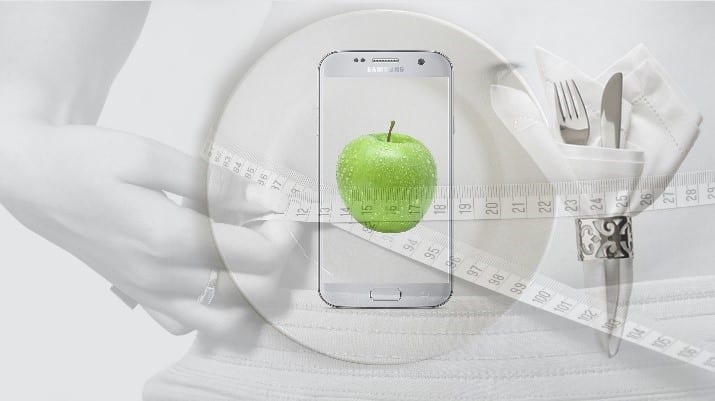Eating enough protein after undergoing bariatric surgery is essential to prevent muscle wasting during rapid weight loss. The body doesn’t only target fat when losing weight, and you may lose muscle mass if you consistently fall short of your protein needs. Your protein goal depends on several factors, such as your age and gender. However, the general guideline for bariatric patients is to consume 60-80g of protein per day. That accounts for almost a third of your daily allotted calories, which requires planning and dedication to achieve. Keep in mind that 60-80g is the minimum goal—some studies indicate bariatric patients experience greater success with even higher protein intakes.
Protein does more than maintain your muscle mass. It also helps improve satiety and keep you fuller for longer. The body digests it slower than other nutrients and requires more calories to do so. It’s also beneficial for maintaining energy levels. Eating three meals a day with at least 20g of protein in each can help you meet your protein needs. Check out the high-protein bariatric recipes below to boost your protein intake.
Bariatric Recipes: High-Protein Pancakes
You can still enjoy many of the foods you made before bariatric surgery so long as you adjust the recipe. Adding protein powder to meals is an easy way to bump up the protein profile. A banana gives these bariatric-friendly pancakes a touch of natural sweetness. They’re also gluten-free.
Ingredients
- 3 tbsp protein powder*
- 2 eggs
- 1 banana (ripe)
* Use a flavored protein powder to tweak the palate variety, or opt for an unflavored protein powder for a more traditional pancake taste. Be mindful of the nutrition information on protein powders, as some have too much sugar.
Directions
- Heat a pan over medium-low heat and spray with a nonstick spray.
- Mash your bananas thoroughly to avoid any chunks. The riper the banana, the smoother the consistency.
- Add all the ingredients to a bowl and blend thoroughly. Add a pinch or so of protein powder if the mixture is too runny.
- Pour the batter onto the pan and allow it to cook until the underside is golden-brown and slips easily. Cook the other side. Cook in batches until you use all the batter
Nutrition Information
- Calories: 290
- Fat: 11g
- Carbs: 28g
- Protein: 22.3g
Bariatric Recipes: High-Protein Meatloaf Muffins
Most standard recipes call for epic proportion sizes that are often too large for everybody—bariatric patients or otherwise. However, converting traditional meals into muffin-size bites is an easy way to enjoy your favorite foods without veering from your diet.
Ingredients
- 25lbs ground turkey, 99% fat-free
- 1 slice of whole wheat bread
- 1 C onions, diced
- 1 egg
- ½ C barbecue sauce + 1/3 C barbecue sauce for topping
- 2 tbsp Worcestershire sauce
- ¼ tsp salt
- Ground pepper, to taste
Directions
This recipe yields nine muffins. Use a 12-cup muffin tray for the correct nutrition information.
- Preheat the oven to 350 degrees and spray a muffin tin with cooking spray.
- Toast your bread and pulse in a food processor or blender to make breadcrumbs.
- Add the ground turkey, breadcrumbs, onion, egg, ½ cup barbecue sauce, Worcestershire sauce, salt, and pepper to a bowl. Thoroughly mix the ingredients until well-combined.
- Spoon the meatloaf mix into nine muffin cups, distributing them evenly. Press each top until it’s flat, and spread the remaining 1/3 cup of barbecue sauce across the meatloaf muffins.
- Bake for 40 minutes.
Nutrition Information
Each muffin yields the following:
- Calories: 115
- Fat: 1.6g
- Carbs: 18g
- Protein: 18g
Bariatric Recipes: High-Protein Chicken and Broccoli Casserole
Casseroles are usually full of cream, butter, and a fat profile well above recommended levels. Unfortunately, most attempts to make healthier versions fall flat. However, chicken and broccoli casserole is one of the rare exceptions. Use fat-free and reduced-fat substitutes to keep the fat content in check without sacrificing flavor.
Ingredients
- 5lbs chicken breast, boneless and skinless
- 10oz frozen broccoli florets
- 8oz cream of celery soup, fat-free*
- ½ C shredded cheddar cheese, reduced fat
- ¼ C almond milk, unsweetened and unflavored
- ¼ tsp salt
- ¼ tsp ground pepper
* Swap out the cream of celery soup for a fat-free cream of mushroom to change up the flavor profile
Directions
- Preheat the oven to 375 degrees. Dice your chicken, then sprinkle with salt and pepper. Spray a 13×9 baking dish with nonstick spray. Add the chicken to the dish, then bake for 15 minutes*.
- Thaw and drain the broccoli while the chicken cooks.
- Combine the broccoli, soup, and milk in a bowl and mix thoroughly.
- Pour the broccoli mix onto the cooked chicken in the casserole dish. Combine the mixture with the chicken, ensuring an even spread. Sprinkle the cheddar cheese in an even coat across the top of the casserole.
- Bake for 10 minutes or until the top starts to brown.
* Cook times may vary. Add time if necessary for the chicken to finish cooking completely.
Nutrition Information
This recipe yields eight 3oz servings. Each serving has the following nutrition information:
- Calories: 192
- Fat: 5g
- Carbs: 4g
- Protein: 30g
Sticking to the bariatric diet can be tough. You’re likely to have many questions and concerns about your new diet and nutrition needs after bariatric surgery. Contact us to schedule a consultation and learn more about how bariatric surgery can improve your health and wellbeing.





